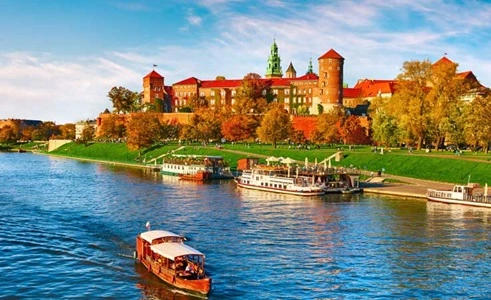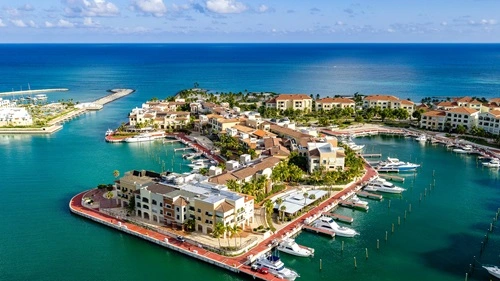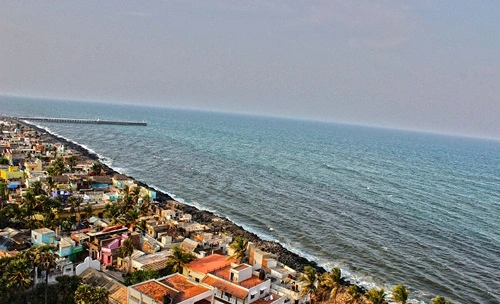Poland is a country that often surprises visitors with its rich history, stunning landscapes, and vibrant culture. From medieval castles to hearty cuisine, Poland is full of unique and interesting aspects that make it a fascinating destination and a beloved homeland for many. Whether you have Polish heritage or are simply curious about the country, here are over ten fun facts about Poland that showcase the charm and heritage of this Central European nation.

1. Poland Has 16 UNESCO World Heritage Sites
Poland is home to an impressive number of UNESCO World Heritage Sites, totaling 16 as of 2023. These include the historic center of Kraków, the Wieliczka Salt Mine, and the medieval town of Toruń. The Auschwitz-Birkenau concentration camp, a somber reminder of World War II, is also a UNESCO site, dedicated to honoring and remembering the lives lost during the Holocaust. Each site offers a unique glimpse into Poland’s rich and varied history.
2. Poland’s Tatra Mountains Are a Winter Wonderland
The Tatra Mountains, located along Poland’s southern border with Slovakia, are a popular destination for skiing, snowboarding, and hiking. With dramatic peaks, alpine lakes, and charming mountain towns like Zakopane, the Tatras attract visitors year-round. In winter, Zakopane hosts events such as the International Mountain Folklore Festival and traditional highlander dances, making it a cultural and natural gem in Poland.
3. Polish Is One of the Most Difficult Languages to Learn
Polish is considered one of the hardest languages for English speakers to learn, thanks to its complex grammar, seven cases, and unique sounds that don’t exist in English. Words like “szczęście” (meaning “happiness”) can be a tongue-twister for beginners! However, Polish is beautiful, and locals appreciate it when visitors make an effort to learn a few phrases, such as “Dzień dobry” (Good day) and “Dziękuję” (Thank you).
4. Poland Gave the World Famous Figures Like Marie Curie and Chopin
Poland is the birthplace of several influential figures in science, music, and literature. Marie Curie, born in Warsaw, was the first woman to win a Nobel Prize and the only person to win in two different sciences (Physics and Chemistry). The legendary composer and pianist Frédéric Chopin was also Polish, and his works continue to be celebrated worldwide. Warsaw honors Chopin’s legacy with an international piano competition and a museum dedicated to his life and work.
5. Home to Europe’s Oldest Operating Restaurant
Wrocław’s Piwnica Świdnicka claims to be the oldest operating restaurant in Europe, having served guests since 1273. Located in the cellars of Wrocław’s City Hall, this historic restaurant offers traditional Polish dishes and is a popular spot for both locals and tourists. Dining here offers not only a taste of Polish cuisine but also a step back in time, adding to the restaurant’s unique charm.
6. Poland Loves Its Pierogi
Pierogi, a type of dumpling filled with savory or sweet ingredients, is one of Poland’s most beloved dishes. These dumplings are often stuffed with potato, cheese, meat, or sauerkraut, though seasonal fruit fillings like blueberries are also popular. Poland even hosts pierogi festivals where chefs compete for the best pierogi, and visitors can sample a variety of flavors. Pierogi are a must-try for anyone visiting Poland!
7. The Polish Constitution Was the First in Europe
Poland adopted its constitution on May 3, 1791, making it the first constitution in Europe and the second in the world, following the United States. Known as the Constitution of May 3rd, it introduced progressive reforms and is still celebrated as a national holiday. The holiday symbolizes Polish resilience and the country’s commitment to freedom and democracy, even through periods of partition and occupation.
8. Bialowieza Forest Is One of Europe’s Last Primeval Forests
Bialowieza Forest, located on the border between Poland and Belarus, is one of Europe’s last remaining primeval forests and is a UNESCO World Heritage Site. This ancient woodland is home to the European bison, the continent’s heaviest land animal. Visitors to the forest can hike through its pristine landscapes and have the rare opportunity to see bison and other wildlife in their natural habitat.
9. Poland Is a Land of Castles
Poland boasts over 500 castles, each with its own unique history and architecture. The most famous is Malbork Castle, the largest castle in the world by land area and a UNESCO World Heritage Site. Built by the Teutonic Knights in the 13th century, Malbork Castle is an impressive example of medieval Gothic architecture and attracts visitors interested in exploring its grand halls, towers, and courtyards.
10. Poland Hosts the Largest Medieval Square in Europe
Kraków’s Main Market Square, or Rynek Główny, is the largest medieval town square in Europe, covering about 10 acres. Dating back to the 13th century, the square is lined with historic buildings, including the Cloth Hall, St. Mary’s Basilica, and the Town Hall Tower. Kraków’s Main Market Square is a vibrant hub filled with cafes, restaurants, and street performers, making it a must-see attraction in Poland.
11. Poland Has One of the Highest Forest Cover Percentages in Europe
Over 30% of Poland’s land area is covered in forests, making it one of the greenest countries in Europe. Poland’s forests are home to diverse wildlife, including deer, wild boar, and even wolves and lynxes. The forests provide Poles with ample outdoor recreational activities like hiking, foraging for mushrooms, and berry picking, especially popular during the summer and fall.
12. A Leader in Amber Jewelry
The Baltic Sea coast, particularly around Gdańsk, is known as the “amber capital” of the world. Amber, sometimes called “Baltic gold,” has been used in jewelry for centuries. Polish artisans craft intricate amber jewelry, often embedding insects and plants within the gemstone, making it a beautiful and sought-after souvenir for visitors. Gdańsk hosts annual amber fairs, where jewelers showcase their finest creations.
13. Poland Celebrates Andrzejki, a Fortune-Telling Festival
Andrzejki, or St. Andrew’s Eve, celebrated on November 29, is a unique Polish tradition where young people gather to practice fortune-telling. Activities like pouring hot wax through a keyhole to form shapes and reading fortunes based on those shapes are popular. Andrzejki is an opportunity for people to have fun, share laughs, and indulge in a bit of mystical holiday cheer.
14. Poland Has a Desert!
Though it may surprise many, Poland is home to the Błędów Desert, the only natural desert in Central Europe. This unusual landscape covers about 12 square miles and was created during the last Ice Age. The Błędów Desert is a unique site in Poland, used historically for military exercises and now enjoyed by visitors who marvel at this rare environment in a country known for its forests and mountains.
15. Poland’s National Drink: Vodka
Poland is known for its vodka, which locals have produced for centuries. Traditional Polish vodka is made from rye or potatoes and often flavored with ingredients like honey, bison grass, or cherry. Vodka holds a special place in Polish culture and is served at celebrations and family gatherings. For those interested in Polish vodka, Warsaw’s Museum of Vodka offers tours and tastings that highlight this iconic drink.
16. Poland’s Beautiful Baltic Beaches
While often associated with history and mountains, Poland also boasts beautiful Baltic Sea beaches along its northern coast. Destinations like Sopot, Gdynia, and the Hel Peninsula offer sandy shores, clear waters, and charming seaside towns. Poland’s beaches are popular summer getaways, and the cool waters of the Baltic Sea provide refreshing swims and scenic sunset views.
17. The Polish Language’s Unique Letters
Polish has nine special letters not found in English, including characters like “Ł,” “Ś,” and “Ż.” The pronunciation of these letters often confuses non-native speakers, adding to the challenge of learning Polish. The distinct sound of the language is part of what makes Polish culture unique and adds to the country’s rich linguistic heritage.
18. Warsaw’s Resilient Rebirth
Warsaw, Poland’s capital, was nearly destroyed during World War II, with over 85% of its buildings leveled. After the war, the city’s residents worked tirelessly to rebuild it, using old photographs and architectural plans to restore landmarks like the Royal Castle and Old Town. Today, Warsaw stands as a symbol of resilience and pride, blending historic charm with modern vibrancy.
Conclusion
Poland is a country filled with fascinating history, beautiful landscapes, and vibrant traditions. From its medieval towns and ancient forests to its celebrated music, cuisine, and holidays, Poland offers something for every traveler and history enthusiast. As you explore these fun facts, you’ll see that Poland’s unique blend of resilience, culture, and natural beauty makes it an extraordinary destination worth discovering.
Whether you’re strolling through Kraków’s medieval square, savoring pierogi in Warsaw, or marveling at the Tatra Mountains, Poland invites you to experience its rich heritage and welcoming spirit.



